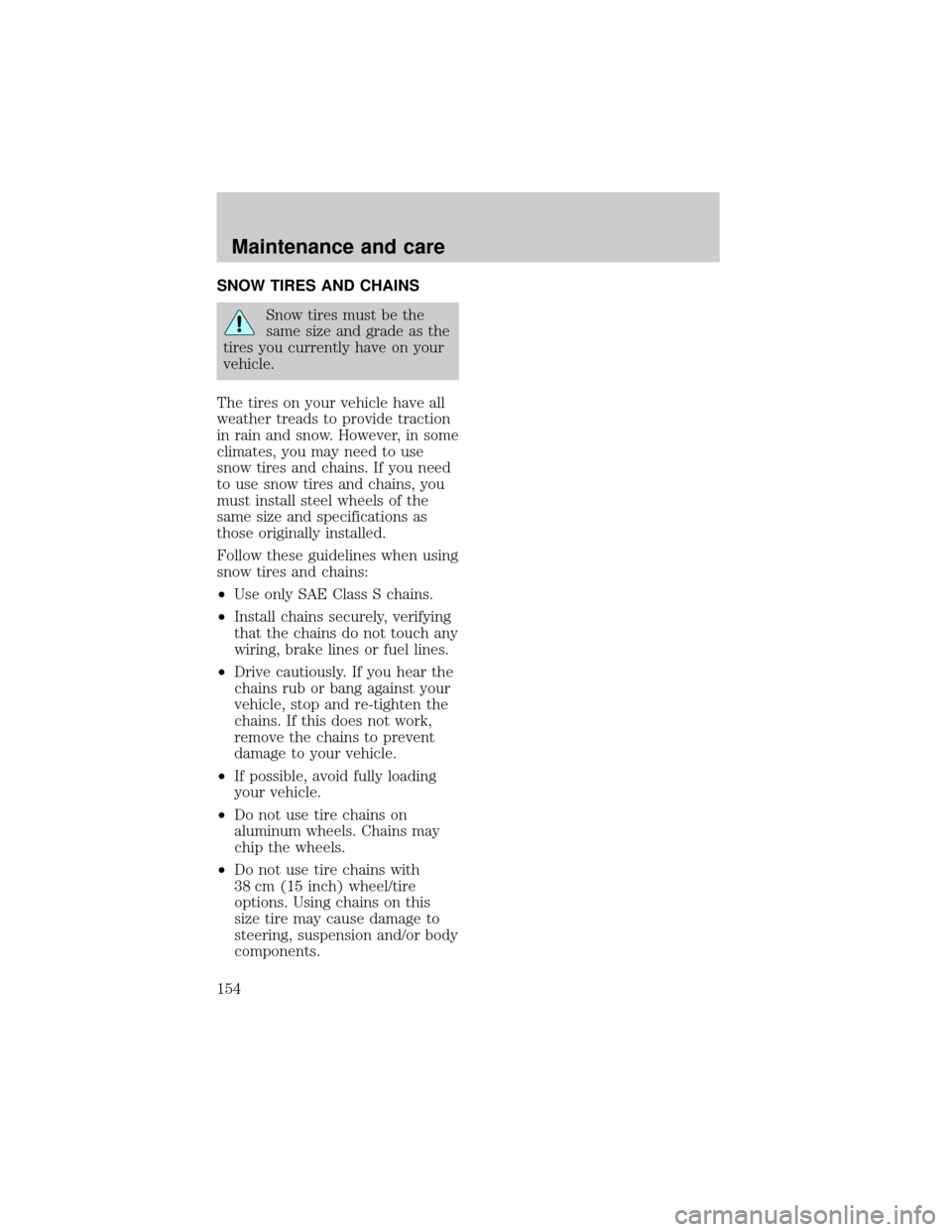Page 62 of 191
If the air bag is inflated,
the air bag will not
function again and must be
replaced immediately.Ifthe
air bag is not replaced, the
unrepaired area will increase the
risk of injury in a collision.
The SRS consists of:
²driver and passenger air bag
modules (which include the
inflators and air bags),
²one or more impact and safing
sensors,
²a readiness light and tone
²and the electrical wiring which
connects the components.
The diagnostic module monitors its
own internal circuits and the
supplemental air bag electrical
system warning (including the
impact sensors), the system wiring,
the air bag system readiness light,
the air bag back up power and the
air bag ignitors.
Determining if the system is
operational
The SRS uses a readiness light in
the instrument cluster or a tone to
indicate the condition of the
system. Refer to theAir bag
readinesssection in the
Instrumentationchapter. Routine
maintenance of the air bag is not
required.
Seating and safety restraints
62
Page 154 of 191

SNOW TIRES AND CHAINS
Snow tires must be the
same size and grade as the
tires you currently have on your
vehicle.
The tires on your vehicle have all
weather treads to provide traction
in rain and snow. However, in some
climates, you may need to use
snow tires and chains. If you need
to use snow tires and chains, you
must install steel wheels of the
same size and specifications as
those originally installed.
Follow these guidelines when using
snow tires and chains:
²Use only SAE Class S chains.
²Install chains securely, verifying
that the chains do not touch any
wiring, brake lines or fuel lines.
²Drive cautiously. If you hear the
chains rub or bang against your
vehicle, stop and re-tighten the
chains. If this does not work,
remove the chains to prevent
damage to your vehicle.
²If possible, avoid fully loading
your vehicle.
²Do not use tire chains on
aluminum wheels. Chains may
chip the wheels.
²Do not use tire chains with
38 cm (15 inch) wheel/tire
options. Using chains on this
size tire may cause damage to
steering, suspension and/or body
components.
Maintenance and care
154
Page 165 of 191
Handle a halogen bulb
carefully and keep out of
children's reach. Grasp the bulb
only by its plastic base and do
not touch the glass; the oil from
your hand could cause the bulb
to break the next time that the
headlamps are operated.
Replacing headlamp bulbs
1. Make sure that the headlamps
are turned OFF.
Coupe
Sedan/wagon
2. Open the hood and find the
headlamp wiring socket and
disconnect from the in-line
connector. This will make it easier
to change the bulb.
Maintenance and care
165
Page 167 of 191
10. Replace the protective dust
shield and lock the shield by
rotating it clockwise until it locks
into position.
11. Reconnect the headlamp wiring
socket to the in-line connector.
Foglamps (if equipped)
To change the foglamp bulbs:
1. Disconnect the electrical
connector from the back of the
foglamp assembly.
2. Twist, then pull the bulb from
the foglamp assembly.
3. Install the new bulb.
4. Connect the electrical connector
to the back of the foglamp
assembly.
High-mount brake lamp
The brake lamp is mounted with
two fastener clips and an assembly
cover on the package tray.
Maintenance and care
167